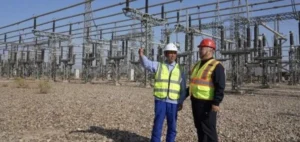Green methanol allows the reduction of harmful emissions entering the atmosphere through their chemical production process. Carbon dioxide from gas currently produces the majority of the world’s methanol. This fossil methanol varies according to the quality and origin of the gas.
Net zero emission
Methanol production and use results in approximately 165 million mt/year of carbon emissions. This represents 0.3% of the world total, according to the International Methanol Producers and Consumers Association. Methanol also comes from coal.
This production only takes place in China, but has an even higher carbon footprint. This grey methanol is currently widely used in the transportation industry. Since the beginning of the year, conventional methanol prices have averaged below $380/mt.
Green methanol appears to be a solution to the problem, although it is more expensive. Thus, the green energy source sells for as little as $400/mt. Thus, it would help achieve net zero emission goals.
Towards mass production
Green methanol is defined as methanol produced by a process that emits little or no greenhouse gases. It is produced from sustainable biomass, usually called biomethanol. As well as from carbon dioxide and hydrogen produced from renewable electricity, generally called e-methanol.
The term “renewable methanol” also makes its appearance. It refers to methanol that reduces the intensity of greenhouse gases. It appears to be a sustainable source of fuel.
Companies are now looking to mass produce renewable methanol. Moreover, it is possible to obtain it from different raw materials. Examples include municipal solid waste, biomass, biogas/biomethane and black liquor.
Two manufacturing processes
Green methanol, produced either by gasification or from biogas, has low carbon emissions. Gasification uses biomass and municipal solid waste (MSW) to produce biomethanol. Biogas comes from organic matter such as manure or straw.
Green methanol from gasification requires several major steps. Syngas comes from the oxidation of a fuel at high temperatures. Finally, the synthesis gas is purified and transformed into methanol by a catalytic process.
Green methanol from biogas is produced by the anaerobic decomposition of organic matter. Then, the biogas is transformed into synthesis gas. Finally, it undergoes distillation as in gasification.
A production of the future
The production from biogas also concerns agricultural production residues producing raw biomethanol. It is transformable into clean methanol free of nitrogen and sulfur. This material is obtained from pulp mills.
Methanol remains the most shipped chemical in the world today. The interest in switching to its more ecological equivalent is therefore paramount. The number of international companies that have entered the biomethanol sphere and are using it continues to grow.
Today, research is focused on the most efficient and least expensive way to produce green methanol. This reduction in carbon emissions will be particularly beneficial for the industrial and transportation sectors. Many companies already use methanol, such as BASF.






















